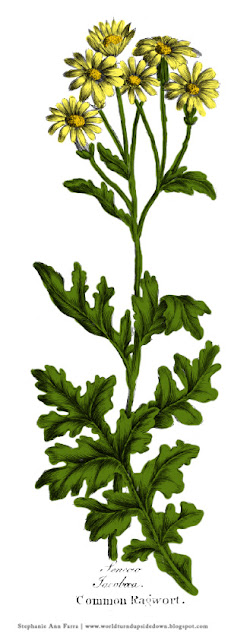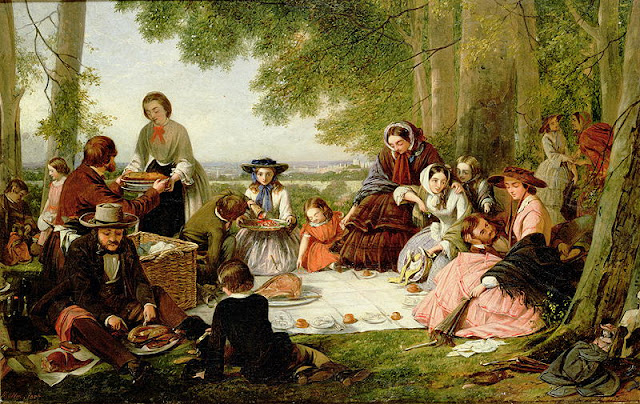-Elizabeth Blackwell
These etchings and the information are from John Hill's Virtues of British Herbs, first published in 1771. Sir John Hill was a prolific writer, doctor and botanist in the second half of the 1700s. He started apprenticing at an apothecary in his early years and went on to earn a medical degree at Edinburgh. He later opened his own apothecary shop. He was known for his multiple books on vegetables and herbs. His writings were so prolific, he was even wrongly attributed as the author of Hannah Glasse's The Art of Cookery Made Plain and Easy.
The herbs and flowers listed below would have been very familiar with 18th century women. Many of these grew naturally in Britain and the United States and these plants were commonly used as infusions to treat remedies or as compresses to be held against the skin. The book specifies that most of these useful herbs are found in fields, just as they are today. If you weren't paying attention, you probably would skip over them.
The book reviewer in The Critical Review in 1771 commented that Hill's book was likely intended for private families as the remedies were not in professional use at the time. It was nevertheless a popular book that went through multiple printings and found itself on both sides of the Atlantic by the 1850s.
***The information below is purely for educational purposes and is not medical advice.***
Although, many modern day herbalists and individuals will attest to their effectiveness, there have been few clinical trials on their uses as remedies. Never use a plant that you cannot identify 100 % and always be aware of the side effects of any plant you might want to use.
Coltsfoot
Leaves (Tussilago farfara)
Uses: Kidney Inflammation, Asthma, Consumption.
***Can cause liver damage.
Great Daisy / Chrysanthemum (Chrysanthemum
Leucanthemum)
Use:
Diuretic, to clean the kidneys.
Infusion
of leaves.
Daisy (Bellis perennis)
Uses: Fevers, Internal Inflammations
Infusion with Honey and Milk
Infusion with Honey and Milk
Receipt:
Clip small a quantity of the Leaves fresh
gathered; put them into an earthen pipkin,
and pour upon them as much boiling water as
will cover them. Let this stand all night. In
the morning boil it a few minutes; and put in
as much honey as will fweeten it. A half-pint
bafin of this mould be drank warm three times
a day.
English Chamomile (Anthemis Nobilis)
Uses: Improving Appetite, Assisting
Digestion: Strong tea made from the flowers.
Colic and Indigestion : Strong Tea made of
the leaves.
Feverfew (Matricaria parthenium)
Use: Relieves Headaches
Leaves as an
infusion or compress.
Goldenrod (Solidago)
Uses: Internal Bruising,
Diuretic.
Infusion of leaves, young leaves are best.
Senico (Senecio sarracenicus) or Broadleaf
Ragwort
Use: Heals bruises.
Used
as an infusion.
Tanzy (Tanacetum vulgare)
Uses: Relief of putrid Fevers and Epileptic Fits.
Flowers, powdered.
Yarrow (Achillea millefolium)
Use: Pain Relief
Drank as an infusion or made into a compress mixed with equal parts Toadflax.
Further Reading
Blackwell, Elizabeth. A Curious Herbal. London, 1739.
Dillon, Clarissa F. "a Work Highly of Use." Vol. 1. Harleysville, PA, 2006.
Dillon, Clarissa F. "a Work Highly of Use." Vol. 2. Harleysville, PA, 2011.
Tryon, Thomas. The Good House-wife Made a Doctor; Or, Health's Choice and Sure Friend Being a Plain Way of Nature's Own Prescribing, to Prevent and Cure Most Diseases... London: Printed for H. N. and T. S. and Sold by Randal Taylor, 1692.




































